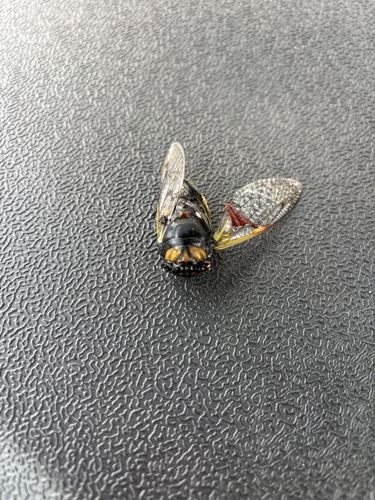Cicada
Scientific Name: Cicadidae (family)
Order & Family: Order: Hemiptera, Family: Cicadidae
Size: Typically 2 to 5 cm (0.8 to 2 inches) in length, though some species can reach up to 10 cm (4 inches).

Natural Habitat
Cicadas are found in temperate and tropical regions worldwide. Nymphs live underground near tree roots, while adults live in trees and shrubs.
Diet & Feeding
Nymphs feed on xylem sap from tree roots. Adults feed on xylem sap from woody plants, though some may not feed at all during their short adult lifespan.
Behavior Patterns
Cicadas are known for their loud mating calls, produced by males using tymbals. They spend most of their lives underground as nymphs, feeding on tree roots. Adult cicadas are short-lived, primarily focusing on reproduction. Periodical cicadas emerge in large, synchronized broods every 13 or 17 years.
Risks & Benefits
Cicadas are generally harmless to humans, though their loud noise can be a nuisance during mass emergences. They can cause some damage to young trees or ornamental plants when adults lay eggs in twigs, but mature trees typically recover. Ecologically, they provide a significant food source for birds and other animals during emergences and play a role in nutrient cycling as nymphs aerate the soil and adults decompose after death.
Identified on: 8/26/2025